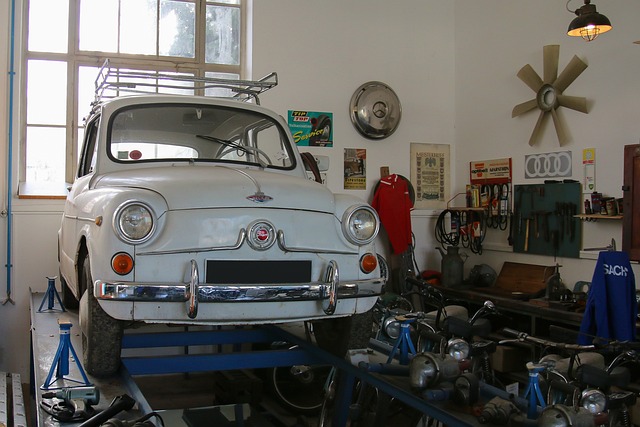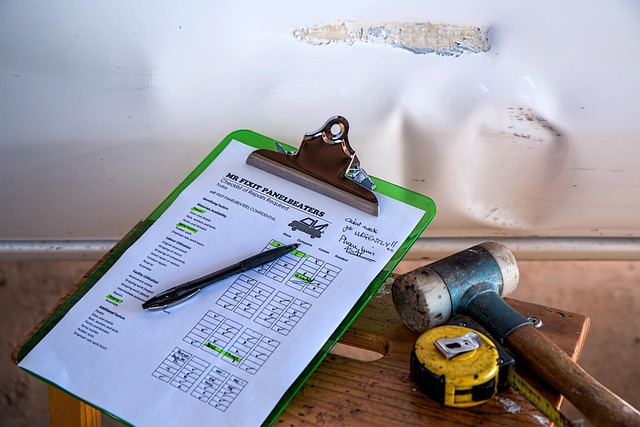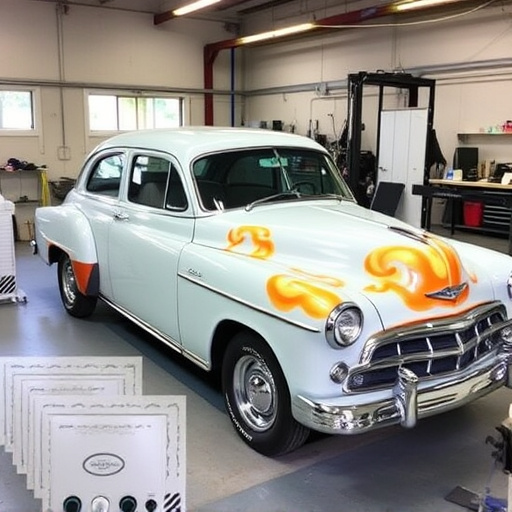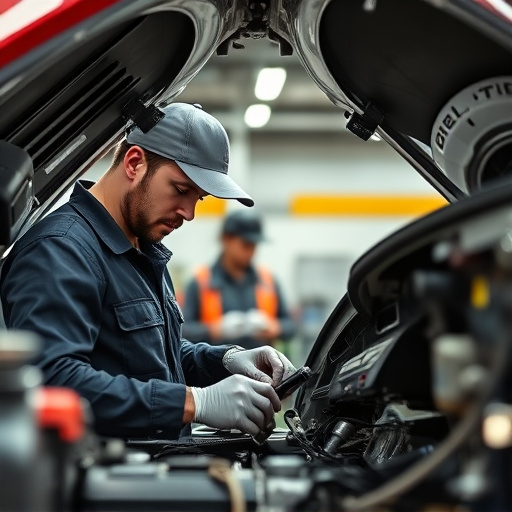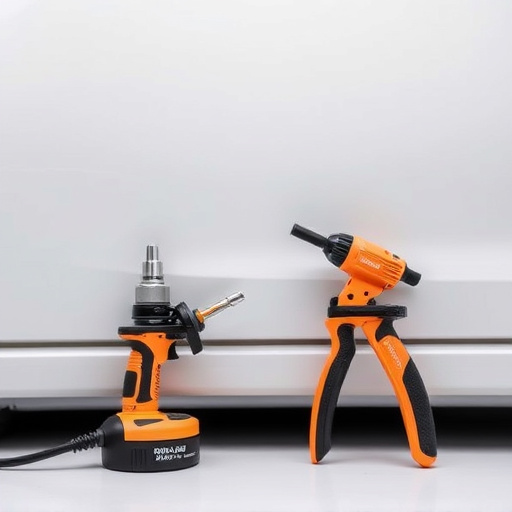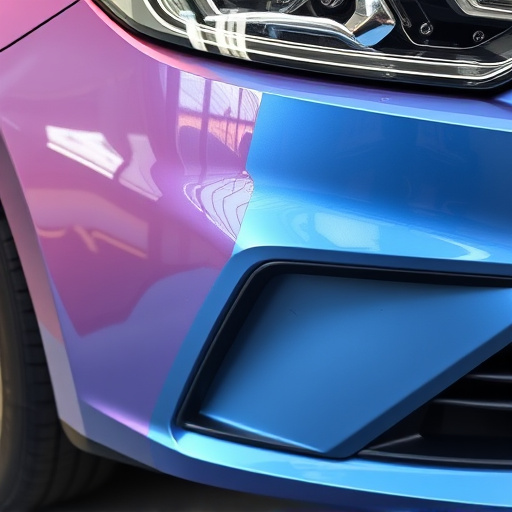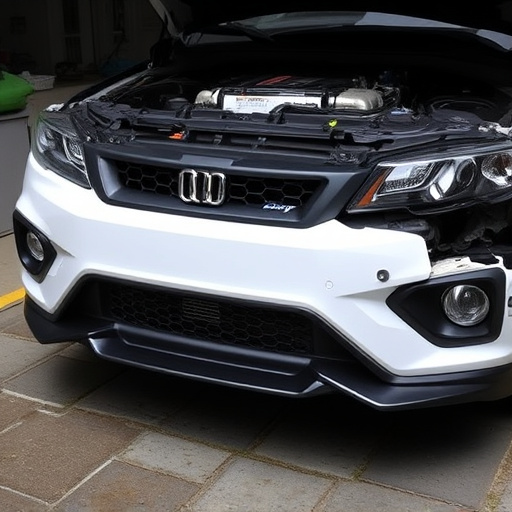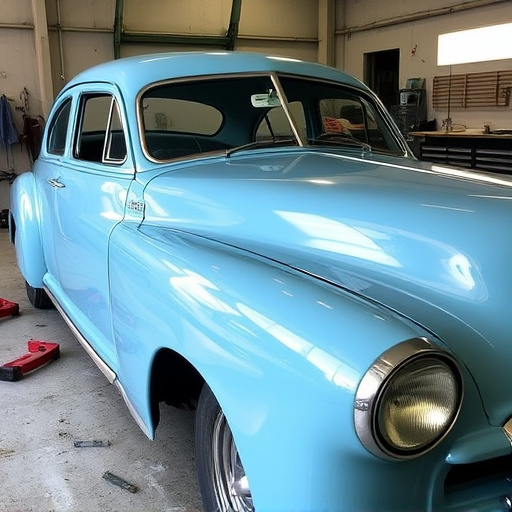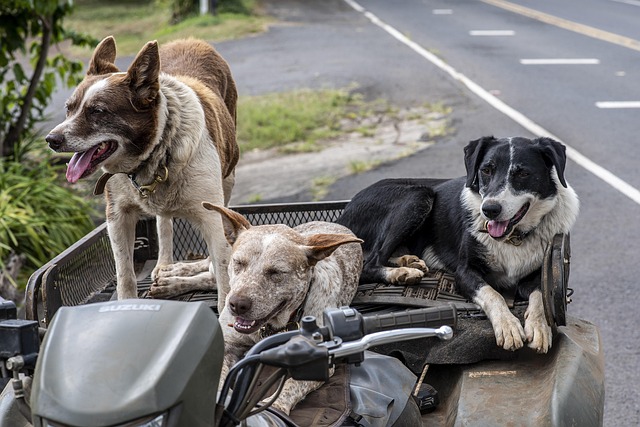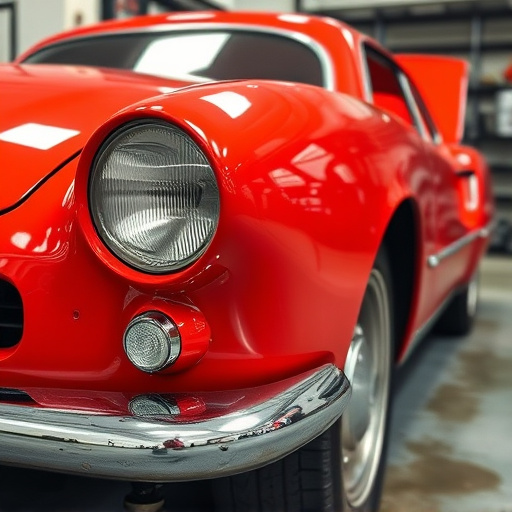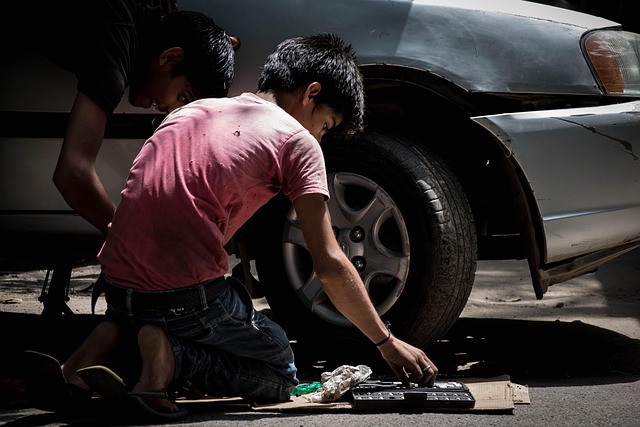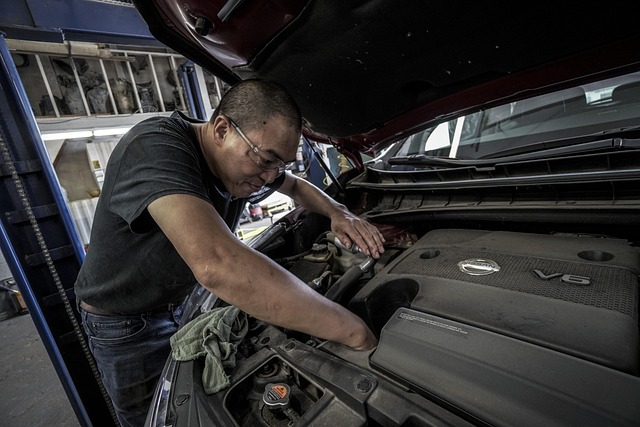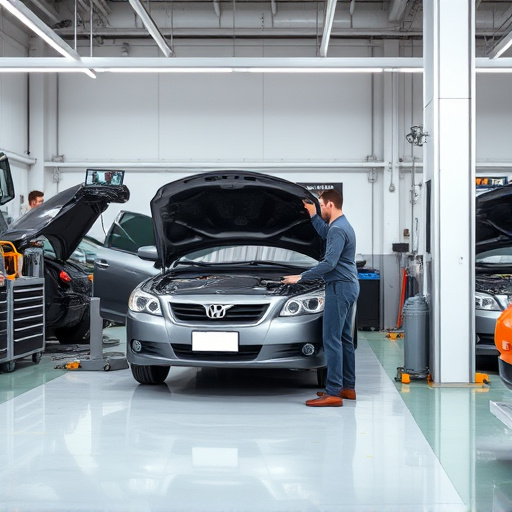Metallic paint's depth and dimension contrast solid, glossy candy paint in collision repair. Candy paint repairs demand meticulous detail due to specialized manufacturing, color matching challenges, and increased vulnerability to damage. Technicians use advanced equipment, tailored methods including wet sanding and custom pigment mixing, and multiple clear coats for optimal restoration, preserving aesthetic appeal and vehicle value in candy paint collision repair.
In the realm of automotive restoration, understanding the nuances between metallic and candy paint collision repairs is paramount. While metallic paint offers durability and a sleek finish, candy paint presents unique challenges due to its intricate, glossy layers. This article delves into these distinct repairs, exploring the structure and properties of metallic paint, the specific difficulties with candy paint, and the techniques, materials, and expertise needed for effective restoration, catering to both car enthusiasts and professional mechanics.
- Understanding Metallic Paint Structure and Properties
- The Unique Challenges of Candy Paint Collision Repairs
- Techniques and Materials for Effective Restoration
Understanding Metallic Paint Structure and Properties
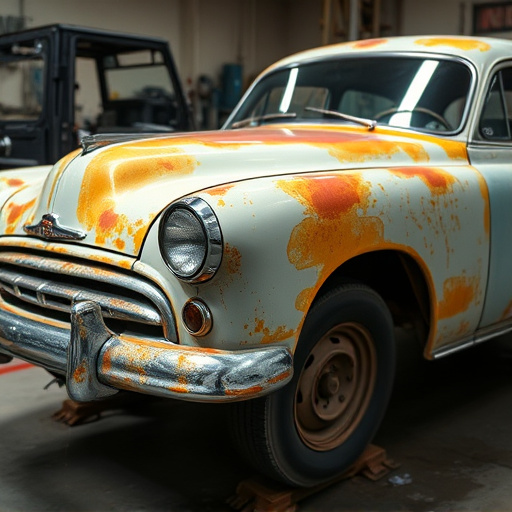
Metallic paint is a unique finish that offers a distinct look compared to traditional or candy paint. Understanding its structure and properties is crucial when considering collision repair, especially for car paint services and vehicle bodywork. This type of paint consists of multiple layers, including a base coat, metallic pigment, and a clear topcoat. The metallic effect arises from the reflective properties of the pigment, which scatters light and creates a shimmering appearance.
Unlike candy paint, which tends to have a solid color and glossy finish, metallic paint adds depth and dimension to the vehicle’s exterior. When damage occurs, auto body services must carefully assess and match the metallic shade accurately. The repair process involves not just filling and painting but also ensuring the reflective qualities remain intact for an optimal finish. This attention to detail is what sets apart professional car paint services when handling metallic or candy paint collision repairs.
The Unique Challenges of Candy Paint Collision Repairs
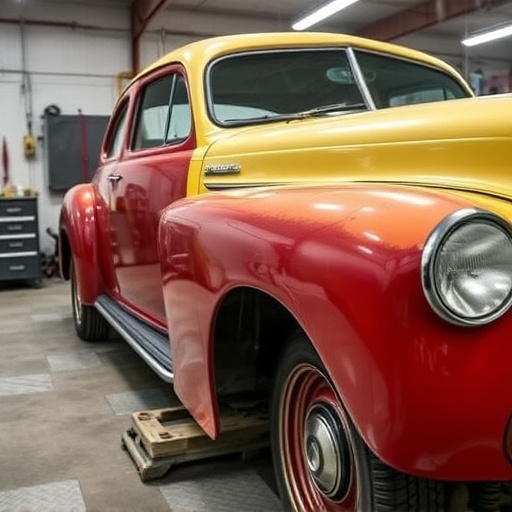
Candy paint collision repairs present a unique set of challenges compared to traditional metallic paints. This is largely due to the special manufacturing process and composition of candy paint, which gives it a glossy, multi-dimensional finish that can be both aesthetically stunning and structurally delicate. When damage occurs, restoring this intricate surface requires meticulous attention to detail and specialized techniques.
One of the primary hurdles in candy paint collision repair is matching the original color precisely. Candy paints often feature complex color shifts and reflections that are difficult to replicate accurately. Additionally, these finishes can be more susceptible to scratching and chipping, necessitating careful handling during the repair process to avoid further damage or imperfections. The intricate nature of candy paint also means that repairs often require more precise tools and techniques, such as advanced sandbing and painting equipment, to ensure a seamless blend with the surrounding, unharmed areas of the vehicle’s exterior. This level of detail work is integral to achieving both visual and structural harmony in auto restoration involving these unique finishes.
Techniques and Materials for Effective Restoration
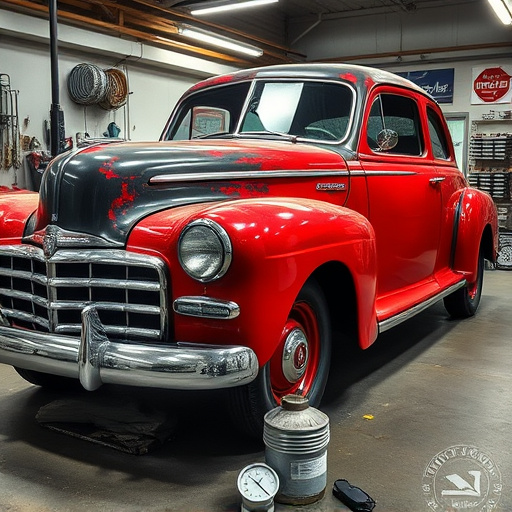
In the realm of candy paint collision repair, technicians employ distinct techniques and materials to restore vehicles to their pre-accident condition. For metallic paints, the process often involves meticulous sandbing and priming to smooth out any imperfections left by the impact. High-quality auto painting products are then carefully applied, focusing on achieving a perfect match with the original metal finish. This precise work requires expertise in color theory and an eye for detail to ensure the final repair is indistinguishable from the rest of the vehicle’s paneling.
Conversely, candy paint collision repairs demand a unique approach due to the glossy, vibrant finishes they are known for. Specialized techniques like wet sanding and custom mixing of pigments are often used to restore these distinctive coats. The process may include removing damaged layers, repairing the base coat, and then meticulously applying clear coats to re-create the intricate, shimmering effects characteristic of candy paint. This level of craftsmanship is essential to preserve the aesthetic appeal and value of vehicles featuring this trendy finish in the collision repair shop.
In conclusion, both metallic and candy paint collision repairs require distinct approaches due to their unique structures and challenges. Understanding the intricate nature of these finishes is key to achieving optimal restoration results. By employing specialized techniques and materials, professionals can effectively fix damaged candy paint, preserving its glossy, vibrant appearance, while metallic repairs demand precision to maintain the original finish’s depth and reflectivity. For top-notch outcomes in candy paint collision repair, experts leverage advanced tools and knowledge of complex coatings.
